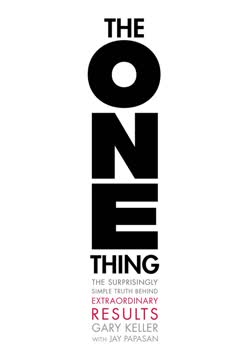Key Takeaways
1. Trust is the foundation of wealth in business
Trust, relationship, equity, and wealth.
Trust drives equity. In business, trust is the cornerstone of long-term success and wealth creation. It's not just about making sales, but about building lasting relationships with customers that translate into equity. This equity can be leveraged into growing wealth over time.
Relationship over transaction. Businesses that focus solely on transactions miss the bigger picture. By prioritizing trust and relationship-building, companies can create a loyal customer base that provides consistent revenue and valuable word-of-mouth marketing.
Trust as competitive advantage. In a marketplace where products and services are often similar, trust becomes a key differentiator. Customers are more likely to choose and remain loyal to businesses they trust, even if competitors offer lower prices or seemingly better features.
2. Familiarity breeds trust, not contempt
The more we're exposed to something or to someone, the more we trust it or them.
Repeated exposure builds trust. Contrary to the old adage, familiarity actually breeds trust, not contempt. The more people see and interact with a brand or individual, the more comfortable and trusting they become.
Omnipresence strategy. To leverage this principle, businesses should strive for omnipresence in their target market. This can be achieved through:
- Consistent advertising across multiple channels
- Regular content creation (blogs, social media, newsletters)
- Participation in industry events and community activities
- Strategic partnerships and collaborations
Patience is key. Building familiarity takes time and consistent effort. It's not about bombarding customers with messages, but about maintaining a steady, positive presence in their lives.
3. Affinity accelerates trust-building
Birds of a feather really do flock together.
Shared interests create bonds. People naturally trust those who are similar to them or share their interests. This affinity can be a powerful tool in building trust quickly.
Leverage affinity in marketing. Businesses can use affinity to their advantage by:
- Targeting marketing efforts to specific interest groups
- Highlighting shared values and experiences in messaging
- Creating communities around the brand or product
- Using testimonials from customers similar to the target audience
Authenticity matters. While leveraging affinity is effective, it must be done authentically. Forced or insincere attempts to connect can backfire and erode trust.
4. Prescribe solutions instead of selling products
What is being sold here is: first, the person—not the products or proposition, and trust in that person—not in the companies or products he represents; second, the prescriptive plan—not a basket of financial products.
Shift from salesperson to advisor. Instead of pushing products, position yourself as an expert who diagnoses problems and prescribes solutions. This approach builds trust by placing the customer's needs at the forefront.
Diagnostic process. Implement a structured diagnostic process that:
- Identifies the customer's specific needs and challenges
- Educates the customer about potential solutions
- Presents a customized plan or recommendation
Value-based pricing. When prescribing solutions, focus on the value delivered rather than the cost of products or services. This allows for premium pricing based on expertise and results.
5. Demonstrate expertise through dramatic proof
Seeing something said one thousand times is not as convincing as seeing it once.
Show, don't just tell. Dramatic demonstrations of expertise or product effectiveness are far more persuasive than claims or descriptions alone. These demonstrations create memorable experiences that build trust.
Create "Houdini moments". Design demonstrations that:
- Are unexpected or surprising
- Clearly illustrate the key benefit or expertise
- Involve the audience or customer when possible
- Use visuals, props, or real-world examples
Leverage technology. Use video, virtual reality, or interactive online tools to create compelling demonstrations that can be shared widely and experienced by potential customers at any time.
6. Reverse risk to build trust quickly
Simply, with risk removed, trust can be earned by results, rather than required in advance.
Eliminate barriers to trust. By offering strong guarantees or risk reversal, businesses can remove the hesitation that often prevents customers from trying a new product or service.
Types of risk reversal:
- Money-back guarantees
- Free trials or test periods
- Performance-based pricing
- Satisfaction guarantees
Build confidence through action. When a business is willing to take on the risk, it demonstrates confidence in its products or services, which in turn builds customer confidence and trust.
7. Establish and maintain a leadership position
Leadership Position takes on added significance in settings where most of the consumers require trust or high trust.
Claim a unique leadership position. Identify and claim a specific area of leadership that sets you apart from competitors and resonates with your target audience.
Maintain and defend your position. Once established, consistently reinforce your leadership position through:
- Ongoing innovation and improvement
- Regular communication of achievements and milestones
- Proactive response to competitive threats
Avoid complacency. Remember that leadership positions can be lost if not actively maintained. Continue to innovate and adapt to changing market conditions.
8. Leverage proof to solidify trust
In battle, it's best to have overwhelming force.
Provide comprehensive proof. Use multiple forms of evidence to support claims and build trust, including:
- Customer testimonials
- Third-party endorsements
- Scientific or statistical data
- Case studies and success stories
- Awards and certifications
Tailor proof to your audience. Different types of proof resonate with different audiences. Understand what your target customers find most convincing and emphasize those forms of proof.
Continuous validation. Regularly update and expand your proof arsenal to maintain relevance and credibility.
9. Create trust through strategic language use
It's not what you say, it's what they hear.
Speak your customer's language. Develop a deep understanding of your target audience's vocabulary, concerns, and desires. Use this knowledge to craft messages that resonate on an emotional level.
Empathy in communication. Show that you understand your customers' challenges and aspirations. This creates a connection that fosters trust.
Avoid jargon and complexity. Use clear, simple language that makes your message easily understandable and relatable. Complex language can create barriers to trust.
10. Integrate online and offline marketing for trust
Most businesspeople leave enormous sums behind, by settling for simple and simplistic media systems, often either all online or all offline, or static rather than dynamic, and with far too few sequential steps.
Create a seamless experience. Integrate online and offline marketing efforts to create a consistent and trustworthy brand experience across all touchpoints.
Leverage strengths of each channel:
- Online: Wide reach, interactivity, data collection
- Offline: Personal touch, tangibility, local presence
Multi-step approach. Develop marketing systems that guide prospects through a series of touchpoints, both online and offline, to build familiarity and trust over time.
Last updated:
Review Summary
No B.S. Trust Based Marketing receives high praise from readers, with an average rating of 4.28 out of 5. Reviewers appreciate its practical advice, deep insights, and no-fluff approach to trust-based marketing. Many consider it one of Dan Kennedy's best works, offering valuable strategies for building credibility and trust in business. Readers highlight the book's focus on creating trust as a crucial element in the new economy, its actionable tips, and its potential to transform high-dollar engagements. Overall, it's seen as an essential read for marketers seeking to enhance their business approach.
Similar Books










Download PDF
Download EPUB
.epub digital book format is ideal for reading ebooks on phones, tablets, and e-readers.




